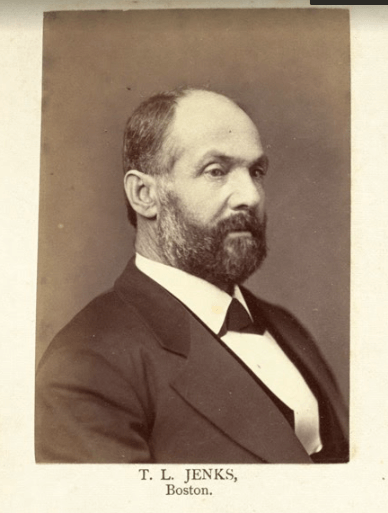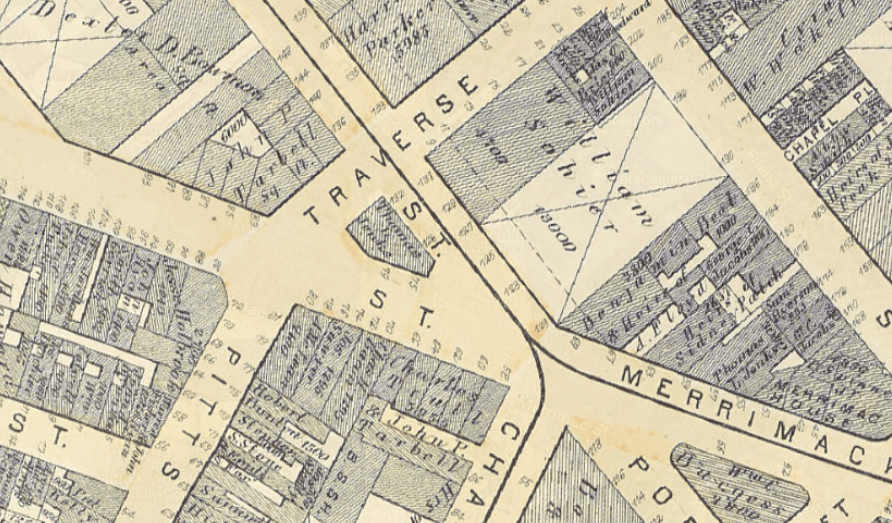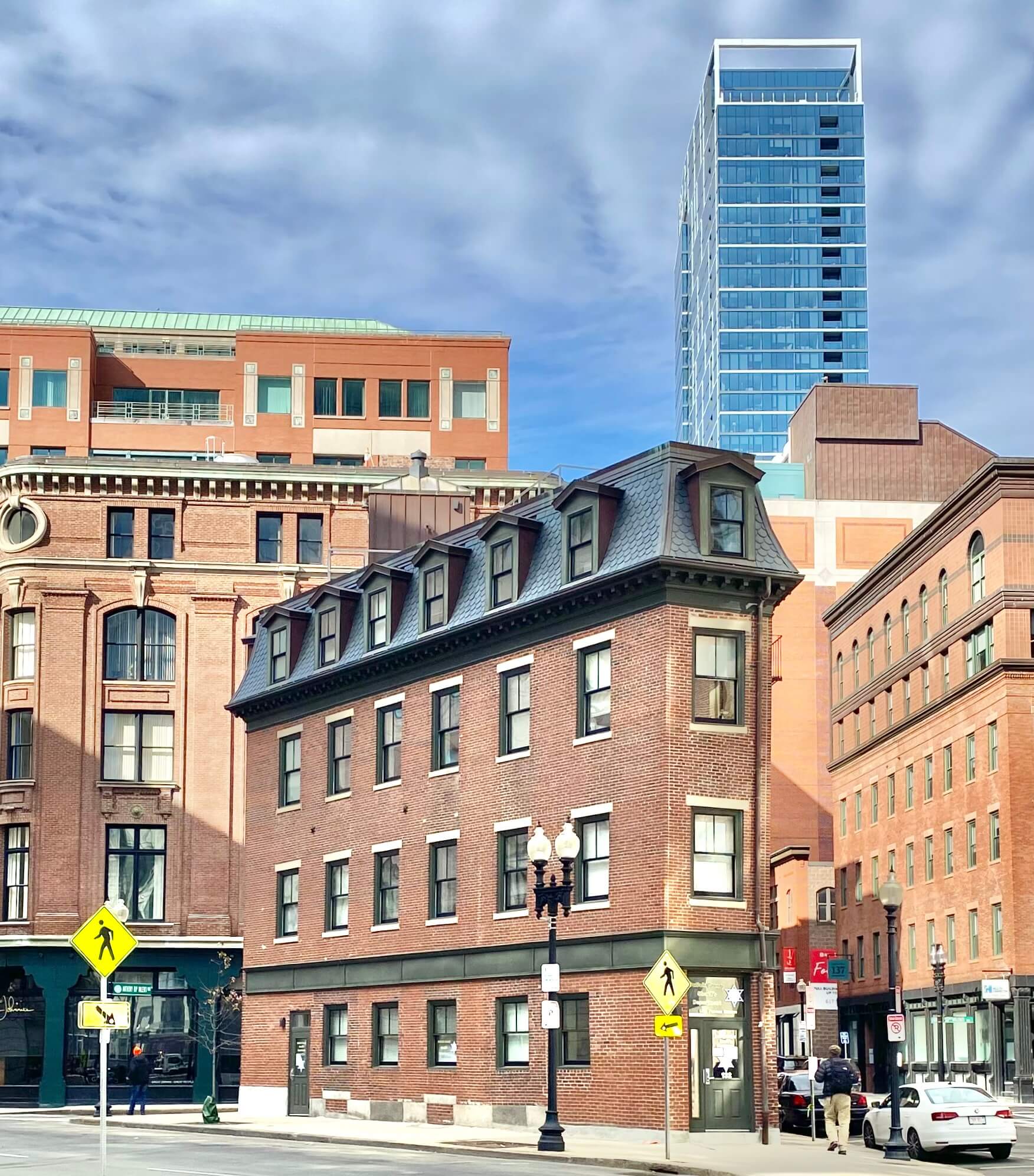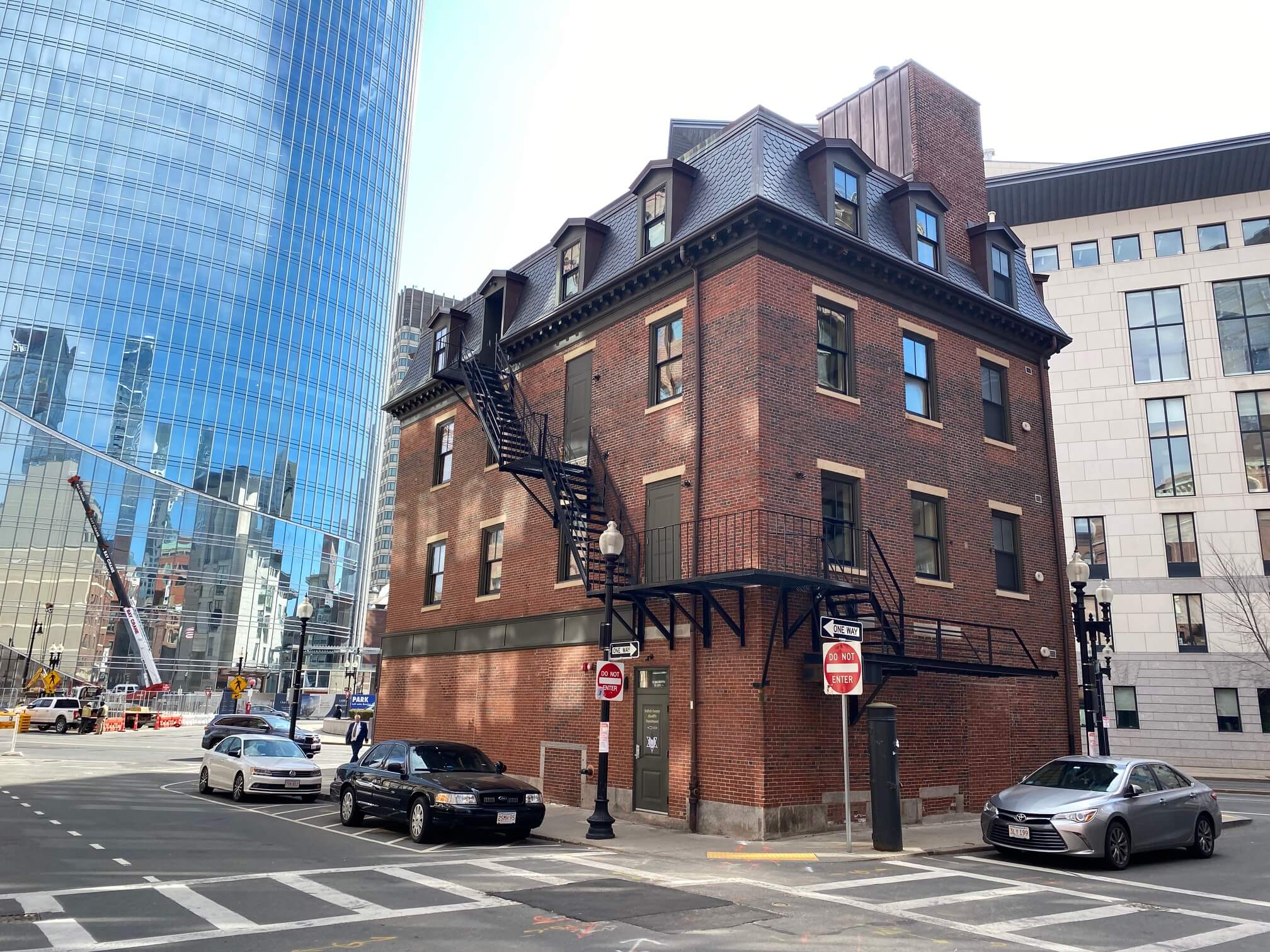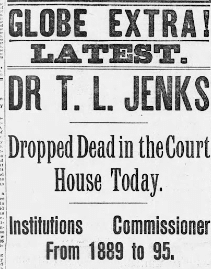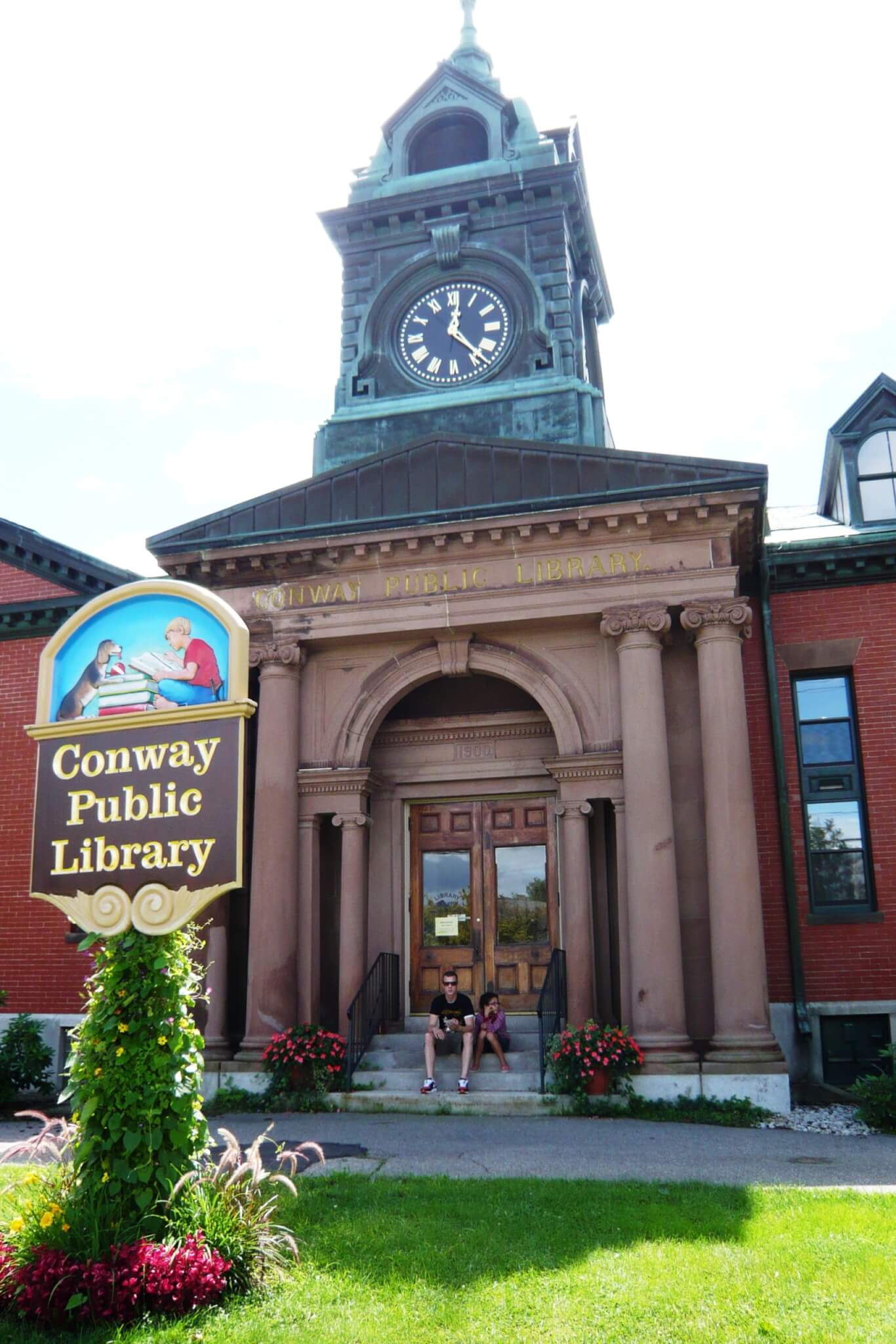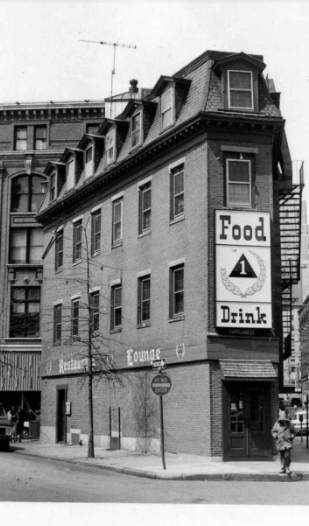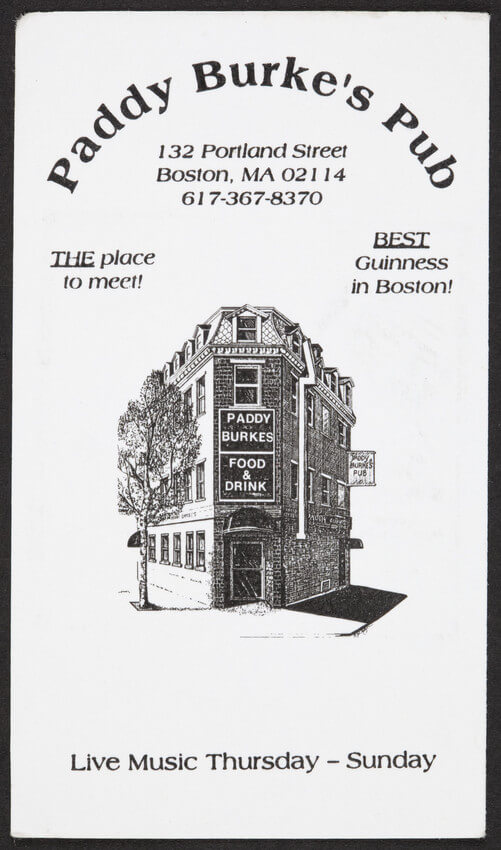Thomas L. Jenks and the Jenks Building
Thomas L. Banks left New Hampshire for Boston in 1845 to pursue a degree in medicine from Harvard University. He settled in the West End where he built a successful medical practice and forged a career in local and state politics. The site of his successful apothecary business, formerly known as the Jenks Building, still stands today at 132 Portland Street and is noted as one of the more architecturally unique historic buildings in the Bulfinch Triangle.
Thomas Leighton Jenks was born in 1829 in Conway, New Hampshire, but left for Boston while still a teenager, most likely for an apprenticeship. Soon after arriving in the city, the Mexican War broke out in 1846 and he enlisted in the Navy, where he served for three years in the hospital ward of the frigate U.S.S. United States. Upon returning from the war, having decided on a career in medicine, Jenks attended Harvard Medical School, which at the time was located on North Grove Street next to the Massachusetts General Hospital.
In the midst of his studies, Jenks became associated with 132 Portland Street where the future Jenks Building would one day stand. He is listed there in the 1850-51 Boston Directory when at the time it was the site of an apothecary owned by a Dr. Samuel Trull, a Harvard Medical School graduate, and member of the Trull distilling family. It is likely that Jenks served as an apprentice or intern for Trull at this location until his graduation from Harvard in 1854.
After his studies, Jenks became established in the West End professionally and made it his home for the rest of his life, residing at 26 Portland Street and then at 10 Allen Street. He ran a successful apothecary practice from 132 Portland Street, first likely in partnership with Samuel Trull and then as sole proprietor. It cannot be definitely confirmed whether the current wedge-shaped structure we know today had been built before Jenks purchased the property from the Trull estate in 1868, though records suggest it was constructed in the 1850’s. It was recorded in 1857, that then owner Ezra Tull, offered a ”building opposite the National Theatre, a singular, irregular built fabric, and which is known by the titles of “Flat-iron,”[and] “Island”” to the city of Boston for $3000, provided that the city demolish the structure and name the resulting empty square after himself. Fortunately that scheme never came to fruition, sparing the future Jenks Building.
By the time Jenks bought the property, it is said he had tired of medical practice and turned his attention to politics and more commercial pursuits. After serving as a front line surgeon during the Civil War, he was elected to multiple terms as Boston city alderman, Massachusetts state representative, and in later years he earned appointments as Chairman of the Boston Board of Police, and Chairman of the Board of Commissioners of Public Institutions. In addition, Jenks sat as a trustee for the Boston City Hospital, co-founded and presided as president of the North End Savings Bank, was a trustee of the Metropolitan National Bank, and managed his own real estate holdings in the West End, which, besides the Jenks Building, included properties at 53, 55 and 57 Merrimac and 1 Milton Streets.
On October 31, 1899, Dr. Jenks died suddenly after collapsing in a Boston courthouse where he was supporting a friend. The sheer volume of newspaper coverage, including front page reports at the time of his death, attest to the reputation and impact this transplanted West Ender had made on the city. Aside from describing all of his professional achievements, mourners remembered him as one not “profuse in his professions but when he made a move it meant something,” and that his “performance was almost always greater than his promise.” As a tribute to his birthplace, Dr. Jenks made a provision in his will for the funds necessary to build a public library in Conway, New Hampshire, which is still in use today.
After his death, Jenks’ daughter Sarah inherited his property, including the Jenks Building. Upon her death in 1922, the building became part of a trust, and in 1934 Wolf Moskowitch purchased it and established his business, Wolf’s Clothing House, there until 1949. From then on the building saw many owners and supported different uses: the Meyer A. Wax lamp shop, a 99 Restaurant, Paddy Burke’s Pub, and currently a Suffolk County Sheriff’s Office.
The Jenks Building is described by the Massachusetts Historical Commission (MHC) as a structure which “contributes to the architectural character of the North Station area and is particularly notable for its polygonal shape and the fine detailing of the [mansard] roof and dormers.” This charming, four-story building clearly stands apart from the nearby historic brick factories and modern glass high-rises, and its architectural uniqueness is just one of many elements contributing to the historical significance of the Bulfinch Triangle. In addition to its design quality, the structure’s historical connection to Thomas Jenks, a man dedicated to the service of his adoptive neighborhood, city and state, is a reminder to residents, community leaders, and city governments of the importance to uncover and carefully consider the connections between structures and their historical context in the face of development decisions still being made today in the West End and elsewhere.
Article by Bob Potenza, edited by Sebastian Belfanti
Sources: Ancestry.com; Bromley Atlases (1883-1917), Boston Evening Transcript (10/31-11/04/1899); Boston Globe (10/31-11/4/1899); Digital Commons; Emerson, David & Betty J. Parker, “Thomas L. Jenks Biography”; https://www.thecrimson.com/article/1899/11/1/obituary-pthomas-l-jenks-54-ms/; MACRIS: Massachusetts Cultural Resource Information System; Wikipedia; https://conwaypubliclibrary.org/


